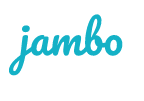
Some government bodies prefer to engage stakeholders using a checklist approach. This procedural approach involves simply informing or consulting stakeholders without genuinely considering their input, usually just to meet basic legal or policy requirements.
However, project managers who want to gain greater public trust and build stronger community relationships must consider stakeholder input. Moving from check-the-box stakeholder engagement to a more meaningful approach means actively involving stakeholders, valuing their feedback, and integrating their perspectives throughout project planning and decision-making.
This guide will define government checklist-style stakeholder engagement, its contributing factors, the importance of moving beyond engagement for compliance only, ideas to achieve meaningful stakeholder engagement, success stories, and how to overcome barriers.
What is checklist stakeholder engagement?
Checklist or "check-the-box" stakeholder engagement refers to a basic, bureaucratic approach in which government bodies or organizations aim to fulfil stakeholder involvement mainly to tick boxes for legal or policy compliance. They treat engagement activities as routine tasks with little intention of using stakeholder input to guide decisions.
Signs that your organization might be following an engagement checklist are if the stakeholder meetings only happen to meet requirements, and collected feedback is rarely considered during decision-making. Another sign is if communications are one-way without genuine dialogue. Other signs include using the same engagement process for every project, regardless of community needs, or treating engagement as a single event rather than an ongoing process.
Checklist stakeholder engagement can often occur in government projects due to a lack of training on effective engagement methods, budget constraints, limited time or resources, and, more frequently, decision-makers' mindset of doing only what is necessary to meet statutory or policy requirements. Success is measured by whether the consultation was held, not by the quality of the dialogue.
Factors contributing to checklist stakeholder engagement in Canadian governments
Government teams in Canada recognize the value of stakeholder engagement, as we can see from various provinces' guides and recommendations. However, several factors might prevent them from genuinely engaging. By understanding these factors, governments can identify opportunities for improvement and make stakeholder engagement more authentic and effective.
Legal or policy compliance mindset
In many government settings, teams engage stakeholders to satisfy statutory or policy requirements, such as environmental assessments or mandatory public consultations. They often focus on "ticking the box" for compliance rather than genuinely seeking or incorporating stakeholder input.
As a result, they measure success by formally holding consultations and fulfilling requirements rather than the extent to which stakeholder perspectives influence outcomes. Internal audits and reporting systems reinforce this approach by emphasizing documentation over impact, making engagement easy to become a routine task.
Lack of resources or time to engage more deeply
Government projects usually operate under limited budgets and tight timelines. Deep, meaningful stakeholder engagement, which includes outreach, facilitation, analysis and reporting, takes time, effort, and financial investment.
With limited resources, planners may default to the minimum requirements, relying on one-off meetings or generic surveys rather than adapting engagement methods to diverse stakeholders. This can leave little room for ongoing dialogue or follow-up.
Limited training or understanding of best practices
Many government staff and program managers may lack specialized training in effective stakeholder engagement, especially when working with diverse groups or Indigenous communities. This knowledge gap can result in reliance on generic approaches rather than custom, culturally informed strategies. Organizations like IAP2 Canada are addressing this challenge by developing targeted educational programs and partnerships. For example, IAP2 Canada's Learning Program for Indigenous Awareness helps engagement professionals advance reconciliation both personally and professionally.
Risk avoidance
Government organizations may prefer to stick to an established "tried process" to avoid controversy or public criticism. There can be the belief that opening new engagement channels might surface uncomfortable issues, which could delay or cancel the project. So, they choose the safest approach, even if it doesn't produce valuable input.
Outdated processes or tools
Many government bodies still rely on traditional engagement methods, such as town hall meetings or paper-based surveys, with little knowledge of digital platforms or stakeholder relationship management software. These outdated tools can limit reach, participation, and transparency. Without modern systems, tracking, analyzing, and following up on stakeholder feedback is challenging, making it easy to resort to a basic, transactional approach.
Explore our guide to the stakeholder engagement inefficiencies holding back government teams →
Why moving beyond compliance matters in stakeholder engagement
Limiting stakeholder engagement to just meeting compliance requirements may fulfill regulatory obligations, but it doesn't build stronger relationships or provide a clear understanding of community needs. Here are some reasons to move beyond compliance:
- Missed opportunities for better project outcomes: Compliance-only outreach (a notice, a meeting, a PDF) collects opinions but rarely captures lived experience, local constraints, or co-created solutions.
- Increased stakeholder resistance and project delays: When stakeholders are not adequately informed or involved, they may raise concerns late in the process, making it challenging to address their needs and slowing project progress even further.
- Loss of public trust and credibility: "Tell and sell" tactics weaken trust. This top-down approach minimizes stakeholder participation, leaving individuals disengaged and less likely to support the initiative.
- Incomplete understanding of community needs: A box-ticking approach prioritizes the most vocal participants while often overlooking underrepresented or equity-deserving groups. This leads to gaps in understanding issues like accessibility, affordability, safety, and cultural impacts.
- Decreased innovation and participation: When stakeholders are not meaningfully involved, fewer new ideas and perspectives are brought forward, leading to repetitive solutions and reduced enthusiasm for participation.
Go in-depth into managing your stakeholders with the proper framework and tools →
Steps you can take to move towards more meaningful stakeholder engagement
Meaningful stakeholder engagement goes beyond meeting basic requirements. The following steps outline a practical framework for building stronger, more effective relationships:
1. Leadership commitment
Meaningful engagement starts with commitment at the top. When government leaders and senior managers prioritize stakeholder engagement by allocating resources, setting clear expectations, and consistently reinforcing its value, public participation moves from a low-level compliance exercise to a core part of project success. Leadership should be prepared to listen to input, reflect on community concerns, and ensure teams have the mandate and capacity to respond.
2. Strategic planning
Embed effective engagement into the project's strategy from the outset. This means intentionally aligning stakeholder engagement activities with overall project goals and the specific priorities of the community. Instead of treating engagement as an isolated task, strategic planning integrates it into the project. With this approach, government teams can thoughtfully design the engagement's purpose, methods, and timing to encourage relevant input, address key issues, and ensure that stakeholder feedback genuinely influences decisions.
3. Diversifying and broadening participation
Moving beyond the "usual suspects" requires a deliberate and inclusive approach. Proactively identifying underrepresented or marginalized groups such as Indigenous communities, new immigrants, low-income residents, youth, and people with disabilities ensures a broader diversity of perspectives. Use a mix of engagement channels, from town halls and open houses to targeted workshops, mobile outreach, and online forums. Accessibility increases when engagement methods accommodate different needs and preferences, promoting inclusion.
4. Early and continuous involvement
Stakeholder engagement should start at project conception and continue throughout. Ongoing communication sustains relationships, demonstrates respect for community input, and helps anticipate emerging issues. The IAP2 Spectrum of Participation highlights the importance of engaging stakeholders early and maintaining their involvement throughout a project's lifecycle. Early engagement helps set clear expectations, build trust, and align the level of participation.
5. One-way to two-way dialogue
Replace one-way information sessions with interactive formats such as facilitated discussions, co-design workshops, advisory panels, and small-group dialogues. The transition from "broadcasting" to "conversing" allows stakeholders to ask questions, share concerns, and receive responses in real time, increasing the legitimacy and transparency of the process. Two-way communication transforms engagement from a transactional formality to a participatory experience that builds mutual respect and problem-solving capacity.
6. Adopt modern tools
By leveraging technology, government teams can centralize all stakeholder information, track communications, and manage real-time commitments. Tools such as online engagement platforms, survey applications, and Stakeholder Relationship Management (SRM) software make reaching a wider audience easier, collecting and analyzing feedback efficiently, and keeping detailed records of interactions. These tools increase transparency by providing stakeholders with timely updates and clear reports on how their input is considered and used. They also improve accessibility and inclusivity by offering multiple ways for people to participate, regardless of location or language.
7. Increase transparency
Transparency supports accountability and trust. Start by publishing engagement plans, timelines, and decision-making processes at the outset so stakeholders understand how and when they can participate. Share background data, outline available options, and openly discuss any constraints to strengthen credibility and foster informed input.
Report back regularly with clear updates and explanations for decisions, demonstrating how stakeholder feedback was considered and what actions will follow. Finally, clearly communicate what will and cannot change, providing reasons so all participants have realistic expectations and confidence in the process.
8. Evaluation and adaptation
Continuous improvement is a key feature of effective engagement. Regular evaluation, such as participant satisfaction surveys, engagement analytics, and debrief workshops, should be employed to assess whether engagement goals were met and uncover improvement areas. Adapt strategies as projects evolve and as community needs change. This feedback is to refine processes, increase future participation, and build lasting internal capacity for engagement excellence.

Case studies and real-world examples
Here are practical examples of moving from check-the-box engagement to more genuine stakeholder involvement:
Case study: The City of Vancouver's collaborative approach
The City of Vancouver has developed a long-term, collaborative governance model for infrastructure planning that brings together city departments, leaders, and community feedback. Rather than working in silos, departments now integrate citywide priorities into all plans and connect at multiple levels, particularly through regular director meetings. This increases transparency and ensures projects align with the community's overall city vision.
The city also incentivizes "win-win" projects through joint funding, creating more flexible budgets and encouraging departments to pursue shared objectives. A centralized approach to project delivery, focusing on long-term outcomes and adaptability, ensures effective collaboration.
Case study: Mercer Peace River strengthens Indigenous engagement
Mercer Peace River Pulp Ltd., a major Alberta pulp producer, has long prioritized strong relationships with 16 Indigenous communities as a cornerstone of sustainable forestry. To meet growing expectations and regulatory requirements, Mercer needed a centralized way to track communications, commitments, and engagement activities.
Partnering with Jambo, Mercer replaced fragmented, resource-intensive systems with a single, user-friendly platform. All departments now use Jambo to log, categorize, and monitor every interaction with Indigenous communities and stakeholders. This shift improved data management, accountability, and organization-wide adoption of best engagement practices.
As a result, Mercer has streamlined annual engagement project planning, enhanced regulatory compliance, and, most importantly, built trust through more transparent, coordinated, and long-term relationships with Indigenous partners.
"What I really like about the Jambo is that it is user-friendly and simple to use. This is a fantastic tool," says Josh Magnusson, former Indigenous Relations Coordinator at Mercer Peace River.
Explore more case studies to see how effective engagement practices lead to real results →
Overcoming barriers to meaningful stakeholder engagement
Overcoming barriers to stakeholder engagement involves addressing resource and time constraints, building team skills, gaining leadership support, and managing expectations. Some practical steps to tackle these challenges and strengthen engagement efforts are:
Address resource and time challenges
One of the most common barriers is the perception that meaningful engagement requires more time and money than governments can afford. While deeper engagement does take planning, it reduces costly delays, litigation, and redesign later in the process. Building a realistic engagement plan with phased activities (early scoping, iterative workshops, targeted outreach) helps distribute resources over time and makes the process more manageable. Leveraging digital engagement platforms can also reduce costs by expanding reach without the expense of repeated in-person events.
Build engagement skills within the team.
Government teams are often technically strong but may lack facilitation, conflict resolution, or equity-based engagement training. Investing in professional development, such as IAP2 training or peer-to-peer learning, equips staff with the tools to manage challenging conversations and design inclusive processes. Over time, this builds organizational capacity, so engagement becomes a core competency rather than an ad hoc activity.
Secure leadership support
Leadership buy-in is critical to shifting from compliance to meaningful participation. When senior leaders champion engagement, they help allocate resources, set departmental expectations, and model transparency. Without leadership support, engagement teams risk being siloed or undervalued. Leaders should visibly participate in engagement activities, endorse findings, and ensure that stakeholder input is integrated into decision-making, not just documented.
Stakeholder Relationship Management (SRM) software for teams that want to practice more meaningful stakeholder engagement
For government teams looking to take the next step, the commitment to meaningful engagement requires the right tools and approaches. This is where Jambo can make a difference. Jambo is SRM software that helps teams centralize engagement records, track issues, and easily demonstrate transparency. Streamlining communication and reporting enables governments to move beyond compliance and focus on building lasting relationships. If the goal is to move from minimal input to meaningful dialogue, Jambo can be a valuable partner in making that shift a reality.









